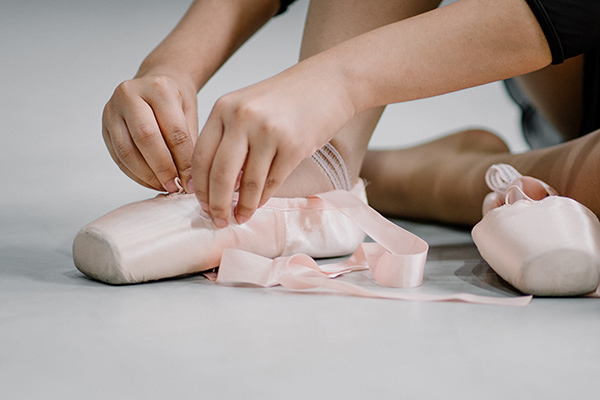Top Tips For Preventing Foot and Ankle Injuries in Dancers
Pain free ankles and feet are crucial to long term success in dance. Particularly when dancer’s progress to pointe the strength and stability of the ankle and foot are crucial in preventing foot and ankle injuries.
Current Research
Despite this, research suggests the ankle is frequently injured in dance, accounting for up to 31% of dancers’ reported injuries (Hincapie et al, 2008) When foot injuries are included, the combined total accounts for up to 57% of all dance injuries. Overuse injuries tend to be more common than traumatic injuries; this is likely due to the repetitive nature of dance training. In the ankle region, lateral sprains are the most common traumatic injury across all sports, including dance. Injuries to the tendons at the foot and ankle are frequently encountered overuse conditions. In the foot and ankle, fractures and ligament sprains are two common traumatic injuries. It also common for dancers to experience plantar fascitis under the arch and nerve compression injuries at the ball of the foot.
Pre-Pointe Assessments
At Sport & Spinal Physiotherapy Gungahlin and Canberra City West we are skilled in comprehensive ankle assessments to diagnose acute and longer term ankle issues associated with dancers and we regularly treat dancers from the Canberra Area. We also perform pre-pointe assessments that prepare dancers who are about to start pointe work. These assessments identify any potentially weak or tight structures and provide an individualised rehabilitation program to reduce the risk of injury that can occur once commencing pointe work.
Top Tips to Preventing Foot and Ankle Injuries In Dancers
- Proper training and teaching are essential to allow dancers of all ages to develop their skills without injury.
- Take adequate rest to allow the body to heal itself from daily wear and tear
- Maintain energy levels by eating and drinking adequately.
- Conditioning and strengthening of the leg muscles that support the arch are crucial.
- Strengthening core muscles and working on the hip control and strong turnout muscles will reduce the load your ankles and feet.
- Try to avoid dancing on hard or uneven surfaces, which could cause injury.
- Take care of your shoes. Consider rotating between 2 pairs of shoes and make sure you correctly store your shoes (Hint: NOT in your ballet bag)
- Dancers should adopt new training schedules slowly. This is particularly true when commencing pointe work.
- Although not always possible when dancing, but more so off stage or out of class, wear supportive footwear, and if you need to wear orthotics, wear them as often as possible.
- If dancers perform excessive pointe or demi-pointe work one day, they should focus on other types of work during the next workout.
Early recognition of ankle and foot pain symptoms is important. Stop activity if pain or swelling occurs. If the pain persists after a few days rest, call and make an appointment to see one of our Dance Physiotherapists on (02) 62624464 for a full assessment. Early treatment will prevent these injuries developing into a longer-term issue.
References
Hincapié CA, Morton EJ, Cassidy JD. Musculoskeletal injuries and pain in dancers: a systematic review. Arch Phys Med Rehabil 2008;89(9):1819-1829.
